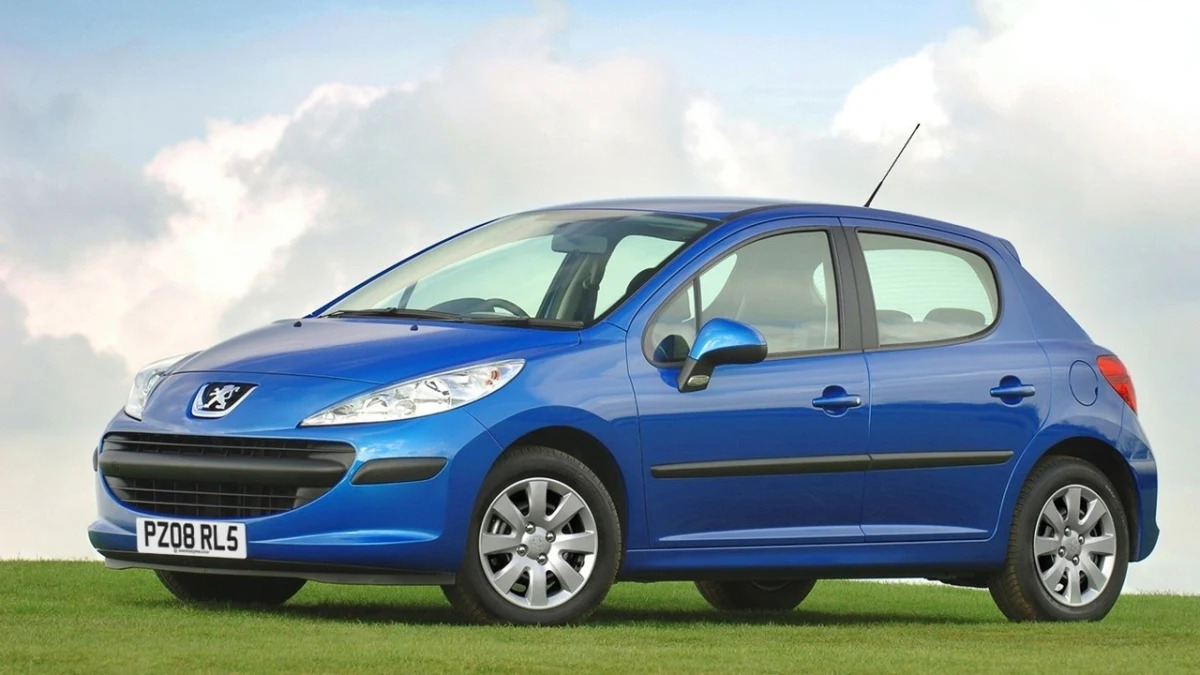Click on the Blue Lion Peugeot for a high res gallery
Continuing the recent European theme of "blue is the new green", Peugeot is adding Blue Lion editions to many of its most popular models. Like VW's BlueMotion models, the Blue Lion editions are tuned to minimize emissions of carbon dioxide. To qualify for the Blue Lion branding models have to emit less than 130 g/km of CO2, be 95 percent recyclable at end of life and be built in a factory that is ISO 14001 certified. Peugeot claims to have fifty models of its cars right now that meet the 130 g/km of CO2 standard although its not clear how many of them will meet the other criteria for Blue Lion certification.
[Source: Peugeot]
For immediate release 8 August, 2008
PEUGEOT RELEASES A NEW TYPE OF LION
- Clear standard to identify the greenest cars in the range
- The Blue Lion standard is awarded to all models with:
- CO2 emissions that are lower than or equal to 130 g/km for vehicles that use fossil fuels
- Manufactured in an ISO 14001 certificated manufacturing plant
- Designed so that, at the end of its life, the vehicle is 95% recyclable (provide recycled materials and energy)
- 33 models with CO2 emissions lower or equal to 120 g/km
- 50 models with CO2 emissions lower or equal to 130 g/km
- Blue Lion branded vehicles significantly reduce the costs of motoring
To assist customers in identifying the cleanest and most environmentally friendly vehicles in its model range, Peugeot has introduced the Blue Lion standard.
The standard will be awarded to all models which meet a list of set criteria:
- CO2 emissions that are lower than or equal to 130 g/km for vehicles that use fossil fuels
- Manufactured in an ISO 14001 certificated production facility
- Designed so that, at the end of its life, the vehicle is 95% recyclable (provide recycled materials and energy)
Choosing a Peugeot Blue Lion Car can also significantly reduce day-to-day running costs.
Not only does it bring down the environmental cost but, it also reduces on-going fuel and vehicle excise duty costs (Road Tax) by increasing the vehicle's miles per gallon capabilities and ensuring many Blue Lion Cars fall into the lowest vehicle excise duty band.
Costs to enter the current London Congestion charge area could also be significantly reduced.
So with its 109 g/km Peugeot 107, the ultimate city runabout the Peugeot 1007, the best selling Peugeot car ever – the 206, the chic and stylish Peugeot 207 or the family friendly 308, Peugeot has a Blue Lion Car to meet the needs of many different potential customers.
Ends...
For more information, please contact Ian on 02476 884216, Jodie (02476 884212) or Kevin (02476 884215).
To obtain pricing & specification information, or high resolution downloadable images, please log onto the Peugeot press website: www.peugeotpress.co.uk (Newspress passwords apply).
To obtain high resolution downloadable images, Press Packs and pricing and specification information on all LCV models, please log onto the Peugeot press website: www.peugeotpress.co.uk (Newspress passwords apply).
55802/080808
Editor's Notes
Key Peugeot Environmental Milestones
| 1980/1982 |
Launch of the VERA programme to work on environmentally friendly vehicles with the Energy-Saving Agency |
| 1994 |
Launch of the first commercial vehicles to run on "vehicular" natural gas. The use of this fuel helps to reduce CO2 emissions by 20% compared with a petrol engine |
| 1995 |
Launch of the electric Peugeot 106. This "zero emission" vehicle was to become the most popular electric vehicle in Europe |
| 1998 |
Peugeot launches its first common rail HDi diesel engines resulting in fuel consumption and CO2 emissions being cut by 20% compared with an indirect injection diesel engine. The increased efficiency of the engine also reduces particulate emissions by 60% and other emissions by between 40 and 50% |
| 1998 |
Peugeot launches a major ecological sponsorship project with the Amazon carbon sink. The aim is to study the link between reforestation, atmospheric carbon capture and climate control by means of a long term (40 year), large scale, live prototype. Two million trees were planted between 1999 and 2004 |
| 2000 |
Peugeot launches its first 120 g/km vehicle the Peugeot 206 HDi eco |
| 2000 |
Peugeot launches the Peugeot 607 with the standard fitment of a diesel particulate emission filter (FAP), a world first |
| 2002 |
Introduction of Peugeot's second generation HDi diesel technology. The 1.4 litre and 1.6 litre HDi diesel engines are characterised by their low fuel consumption and reduced CO2 emissions of 20% compared to a diesel engine with a conventional injection system. |
| 2005 |
Launch of the electronically controlled manual gearbox (2-Tronic) helping to reduce further fuel consumption and greenhouse gasses by nearly 5% compared with a conventional manual gearbox |
| 2006 |
A partnership with the BMW Group allows a new family of turbocharged petrol engine (THP) to be created. These new engines offer a reduction of between 10 and 15% in fuel consumption and CO2 emissions |
| 2007 |
Launch of the VTi engine range in co-operation with BMW. This conventional petrol engine range uses technology unequalled in its segment and compared to a conventional petrol engine, a reduction in fuel consumption as high as 30% when the engine is operating at low speed and 10% in the combined cycle |



Sign in to post
Please sign in to leave a comment.
Continue